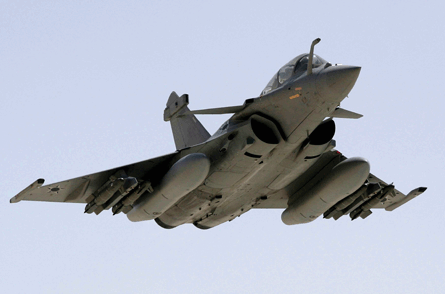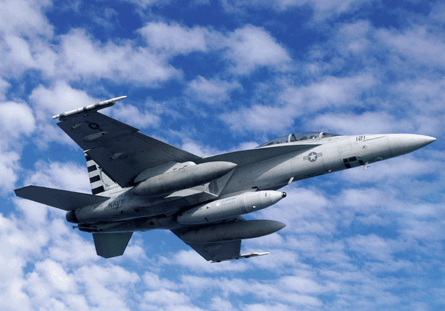By Rebecca Barrett
Financial constraints and an unwillingness to commit investment impeded Brazil's first attempt at a fighter programme. But the age of its fighter fleet now threatens the nation's security to the point that the government's back is against the wall and it has been forced to respond.
Fortunately for Brazil, it appears that the pieces necessary to complete the project are in place. Years of strong economic growth will be the backbone of support for Project FX-2.
The programme will offer Brazil a capital return on its investment through the strengthening of its military industry. Regardless of which fighter is selected, a renewed inventory of next-generation aircraft will offer Brazil prestige.
The military investment, both industrial and practical, will boost the country's standing in the international scene. As the giant of Latin America, Brazil is finally prepared for Project FX-2 to take flight.
 |
|---|
© Saab |
The Brazilian armed forces' requirement for a new fleet of fighters dates to 1996, when an initial request for information was issued. A lack of funding for the programme, then dubbed project FX, caused continual delays for the following nine years. There was even hesitation within the air force about committing to a fighter generation that was, at the time, already being surpassed in the world fighter market by more capable aircraft.
By February 2005, Project FX was cancelled. In the same year, the air force's fleet of Dassault Mirage IIIs surpassed its projected design life. The airframes were too worn out to be worth upgrading, and Northrop F-5s and Alenia/Embraer AMXs also needed replacing.
Then, in September 2007, President Luiz Ignacio Lula da Silva struck a nationalistic chord by promising to rebuild the domestic defence industry while overhauling the military.
The Lula administration, always reticent about the cost of such a procurement, decided to resurrect the fighter programme when the air force again pegged the procurement as its top priority. All plans from the initial FX programme were scrapped, and FX-2 was created according to current and future needs.
The original FX programme was estimated to cost between $700 million and $800 million for an initial batch of 12 fighters. With the advent of FX-2, new plans and evolving needs have driven the cost up substantially, with the government prepared to invest $2.2 billion for the first batch of 36 aircraft.
And the government is going a step further, saying that it is willing to pay even more depending on the deal - as much as four times more. The defence ministry has confirmed that the aircraft will not be chosen within a monetary framework, as a price tag cannot be placed on the long-term technological benefit the nation will receive.
In February, the three shortlisted companies - Boeing, Dassault and Saab - made their final offers to the defence ministry.
Saab is offering an enhanced version of the Gripen NG. The next-generation multirole fighter has low operational, acquisition and support costs, and offers a Selex-built active electronically scanned array (AESA) radar. The version offered to Brazil also has increased thrust, payload and an extended range. Able to be deployed from just about anywhere, the Gripen offers great flexibility, especially in remote locations where runways are few and far between, much less paved.
However, its single engine might deter the Brazilians should they seek to diversify their inventory and operating capability. The engine is a General Electric F414G, similar to the Boeing F/A-18E/F Super Hornet's F414-400.
Minor differences include changes to the alternator for added power and modified full authority digital engine control software to enhance the single-engine operation.
To increase its chances, the Swedish company reopened an office in Brasilia in October 2008 as a demonstration of its dedication to Brazil and its desire to improve the nation's industrial strength.
While a winner will not be selected until later this year, there has been speculation over Dassault, based on relations between the Brazilian and French governments.
The French company is notably a good supplier that offers no political interference on technology transfer. In addition, it is motivated to make the sale as it still lacks its first export customer for the Rafale.
As a true multirole fighter, the Rafale offers versatility, by combining ground attack with air-to-air combat. It is also capable of beyond visual range air-to-air firing at low altitudes. But its narrow range of integrated weapons could deter the Brazilians.
The on-board radar is a Thales-built terrain-following RBE-2. An AESA radar will not be available on the Rafale until 2012.
 |
|---|
© Rex Features/Sipa Press |
After problems with the US Congress sanctioning a technology transfer, Boeing has offered the F/A-18E/F to the Brazilian air force. Although the sale has been cleared, fear of political interference in the future could push the Brazilians away from selecting a US company. However, the difficulty in attaining US technology makes the Super Hornet attractive, as it offers prestige, enhancing Brazil's strong position in the southern hemisphere.
Compared with the Rafale and the Gripen, some regard the Super Hornet's aerodynamic performance as inferior. However, it arguably offers the best on-board systems technology and has a Raytheon APG-79 AESA radar. Brazil did not specify that an AESA should be in the package, but it could play an important part in the selection process, because of the technical knowhow it will bring.
Many of the recent fighter competitions around the globe have been won by aircraft equipped with AESA radar. In some cases, 1970s-designed aircraft equipped with AESA radar have defeated more modern opponents with older types of radar.
Export versions of the Boeing F-15E carrying a Raytheon APG-63 AESA radar beat the Rafale in Singapore and South Korea. The Lockheed Martin F-16 Block 60 equipped with a Northrop Grumman APG-80 agile beam radar also defeated newer models from Europe (the Eurofighter Typhoon and Rafale) in a contest to supply the United Arab Emirates with 80 aircraft. Aircraft equipped with AESA radars are not guaranteed to be selected over their non-AESA equipped counterparts, but they seem to have had a significant advantage in the most recent competitions.
The Brazilian procurement will include a new fleet of at least 120, possibly as many as 150, supersonic fighters to be in operation between 2023 and 2025. The Gripen is the most affordable, followed by the Super Hornet and then the Rafale.
The average cost of a Gripen is between $37 million and $42 million, bringing the total cost for the first batch to $1.33-$1.51 billion. The Super Hornets are listed at $54.6 million, with a first batch estimated to cost $1.97 billion. The Rafales run for $59 million to $64 million and will cost between $2.12 billion and $2.3 billion for a consignment of 36 aircraft.
Although the South American giant faces no imminent threats and has a peaceful approach to foreign relations, Project FX-2 offers security. Having a large fighter fleet is the meat to Brazil's flaring muscle. And technology independence provides security through the economic benefit of an export industry and the ability to meet the nation's military needs.
 |
|---|
© US Navy |
In that regard, FX-2 plays a key role in Brazil's national defence strategy. The new strategy, presented in December 2008, stresses the importance of national sovereignty and identifies the role of the military industrial complex in Brazil's national development plan.
The document calls for the expansion of the armed forces to protect the Amazon region and its borders as well as the retraining of troops to be capable of rapid-strike guerilla warfare.
Seeking to be a more expansive national power within South America, Brazil aims to be independent from the military technology of other nations. The restructuring of the Brazilian defence industry is one of the three main axes of the national defence strategy. In accordance with the plan, technology transfer is a requirement of Project FX-2. While this came close to keeping US-based companies out of the competition, it may just give one of the three final contenders a winning edge.
A responsible monetary policy and several years of strong economic growth have put Brazil in a good position to afford an investment of this magnitude - an investment that the nation hopes will yield long-term dividends.
Brazil has adopted measures to soften the impact of the global financial crisis. The first were aimed at the credit markets to guarantee greater liquidity in the interbank market. Compulsory deposits from the central bank were then reinvested into the economy. Foreign exchange was provided to the market to assure foreign investors that the government has sufficient funds to pay off external debts and reduce the risk of a moratorium. Despite the recession, the government is committed to maintaining its investment programmes.
President Lula da Silva has insisted on strategic financing based on long-term investments. Funding the military industry is one of the most important strategic moves for Brazil. Increasing military industrial capabilities will put the country in the running with the major European powers, China, India, Russia and the USA. As a BRIC (Brazil, Russia, India, and China) country, Brazil is seeking to improve its position, not only as a regional leader, but as a global player.
After years of failed attempts to fulfil the requirement, Brazil's fighter programme will deliver more than just an attack capability. The advanced supersonic fighter technology to be gained from Project FX-2 will give Brazil a competitive edge in the region for future industrial production. For now, the economic pedestal on which FX-2 stands remains firmly planted and able to weather economic blunders. With the engine of growth running strong, the outlook for FX-2 is optimistic.
- Rebecca Barrett is an analyst for Forecast International. Based in Newtown, Connecticut, it provides market intelligence and analysis in aerospace, defence, power systems and military electronics.
Source: Flight International
















